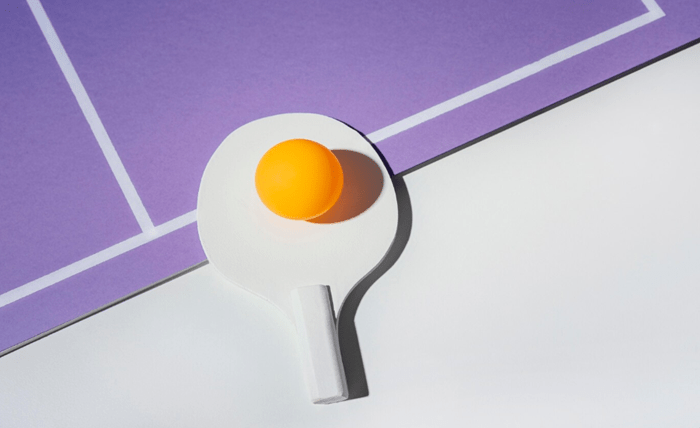Setting the Stage: Modern Court Dynamics
Pickleball moves faster now than ever. Today’s top players combine quick reflexes with tactical variety—mixing slow dinks, blistering drives, and clever third-shot drops in the same rally. Paddle choice now serves as a difference-maker, not just an accessory.
Equipment factors into everything from shot stability to spin control. With rallies growing longer and points more tactical, the right paddle can amplify a player’s style. An aggressive drive off the baseline lands deeper and faster with a paddle built for power, while soft hands near the net shine with paddles focusing on feel.
Failing to match paddle characteristics to playing style means giving up points before even striking the ball. Small differences in weight, texture, and core construction are what let advanced players stretch tiny edges into winning margins.
Understanding Pickleball Paddle Construction
A paddle’s build shapes every shot outcome. Three popular core materials dominate the game: Nomex, polymer, and aluminum honeycomb.
- Nomex: Stiff, lightweight, and loud. Delivers maximum pop, but deadens soft touch slightly.
- Polymer: Softer feel, quiet sound, bigger sweet spot—good for controlled touch.
- Aluminum honeycomb: Offers a blend of stiffness and lightness, but the sweet spot can feel smaller.
The face matters, too. Composite and graphite faces provide more control, while fiberglass faces emphasize power. Surface textures affect grip on the ball, with rougher faces spinning the ball faster.
Edge guards protect the paddle rim but add minor weight. Balance and weight (typically 7-8.5 ounces) decide maneuverability and stability.
| Component | Typical Options | Shot Impact |
| Core Material | Nomex, Polymer, Aluminum | Power, feel, sound |
| Face Texture | Smooth, textured | Spin, control |
| Weight | 7–8.5 oz | Maneuverability, stability |
| Edge Guard | Tapered, wide | Durability, balance |
Every paddle detail—from core to face—shifts the interaction between player skill and court output.
Dynamic Paddle Profiles: Shaping Power and Control
Some paddle designs focus on raw power; others build in precision for soft placement. Weight distribution plays a big part.
Head-heavy paddles place more mass toward the top, amplifying swing momentum for harder drives but feeling harder to flick quickly at the net.
Head-light paddles offer quick response at net exchanges and suit players who rely on dinks and blocks.
Balanced paddles strike a middle ground, providing both speed and solid feel.
Surface grit also plays a role. Grippy faces let players generate extra topspin and slice, especially important for aggressive passers or spin-heavy servers.
Case Study 1: Power-Focused Baseline Player
- Uses a head-heavy, textured paddle with a Nomex or fiberglass face.
- Benefits: Maximum drive speed, deeper contact point.
- Challenge: Slight loss of touch near the net.
Case Study 2: Net-Rush Specialist
- Favors a head-light, large-sweet-spot paddle with a polymer core and composite face.
- Benefits: Rapid hand movements, excellent touch on drops and blocks.
- Challenge: Needs more effort to drive from the baseline.
Matching Paddle Specs to Play Styles
Choosing the right paddle starts with honest reflection on play style.
Baseline Grinder
- Attributes: Extended rallies, controlled shot selection.
- Ideal Paddle: Balanced weight, polymer core, medium grip texture.
All-Court Player
- Attributes: Mixes drives and net play.
- Ideal Paddle: Midweight, medium texture, graphite or composite face.
Aggressive Net Jockey
- Attributes: Poaches, fast volleys, quick hands.
- Ideal Paddle: Head-light, polymer core, oversized sweet spot.
| Play Style | Weight | Core | Face | Balance |
| Baseline Grinder | 7.5–8.3 oz | Polymer | Composite | Balanced |
| All-Court | 7.6–8.1 oz | Polymer | Graphite | Slightly Balanced |
| Net Jockey | 7.2–7.8 oz | Polymer | Composite | Head-light |
Consider these pairings next time you reach for a new paddle, aligning attributes with personal strengths.
Comfort, Grip, and Endurance in Paddle Selection
Long matches and high-intensity rallies demand attention to comfort. The wrong grip can cause blisters or even chronic strain.
- Handle circumference: Pick one that matches your hand size—small hands often need 4.0 inches, medium fits 4.25, and large hands go up to 4.5.
- Grip material: Soft, tacky grips prevent slipping but absorb sweat differently.
- Vibration dampening: Some paddles offer specialized cores or shock-absorption layers to prevent wrist and elbow fatigue.
- Weight distribution: Lighter paddles reduce strain during quick exchanges at the net but might require more energy on power shots.
Testing tips:
- Swing through your full range of shots.
- Note any tingling, numbness, or wrist soreness.
- Avoid paddles that twist or feel unstable during blocked volleys.
Spotting early comfort problems saves pain (and points) down the line.
Technological Advances in Pickleball Paddle Features
Recent advances bring smarter features to paddles that change the way players approach the game. Brands now integrate sensors into paddle handles, giving feedback on swing speed, angle, and spin. Some composite faces use proprietary polymer blends for superior control without added weight.
A trend gaining popularity: edge ramp innovations that expand the usable sweet spot, making mishits rarer. Vibration reduction systems, including special gel inserts or multi-layered cores, cut down on hand and arm fatigue.
For a wide range of next-generation options, see pickleball paddles.
While high-tech features can carry a price premium, their actual benefits depend on player needs. Beginners may not need sensors, but advanced competitors could gain an edge from real-time analytics or longer-lasting gear.
Final Rally: Elevating Performance through Smart Paddle Choices
Every detail—core construction, surface grit, weight, and tech features—shapes performance. The smartest players make paddle choice an extension of game planning.
Fine-tuning equipment to match skills and style means more confident swings, fewer errors, and better recovery between points. Thoughtful paddle selection not only ups technical output, it sparks more resilient and satisfying play.
Playing like a champion starts well before the first serve: It begins by wielding the right tools for the right battles.

